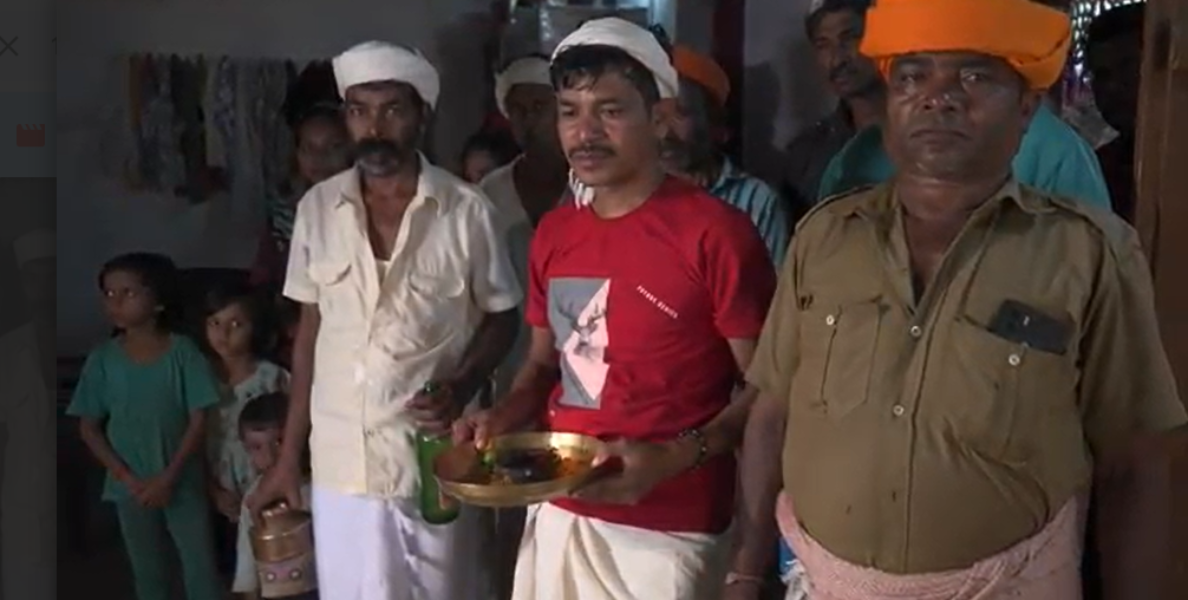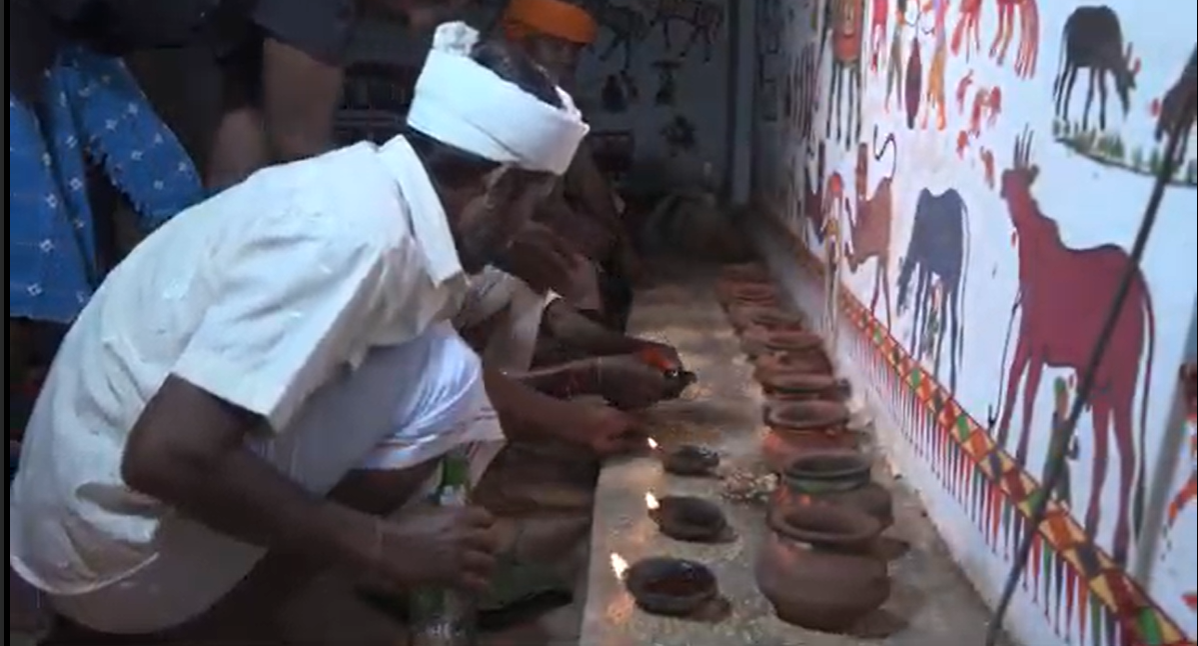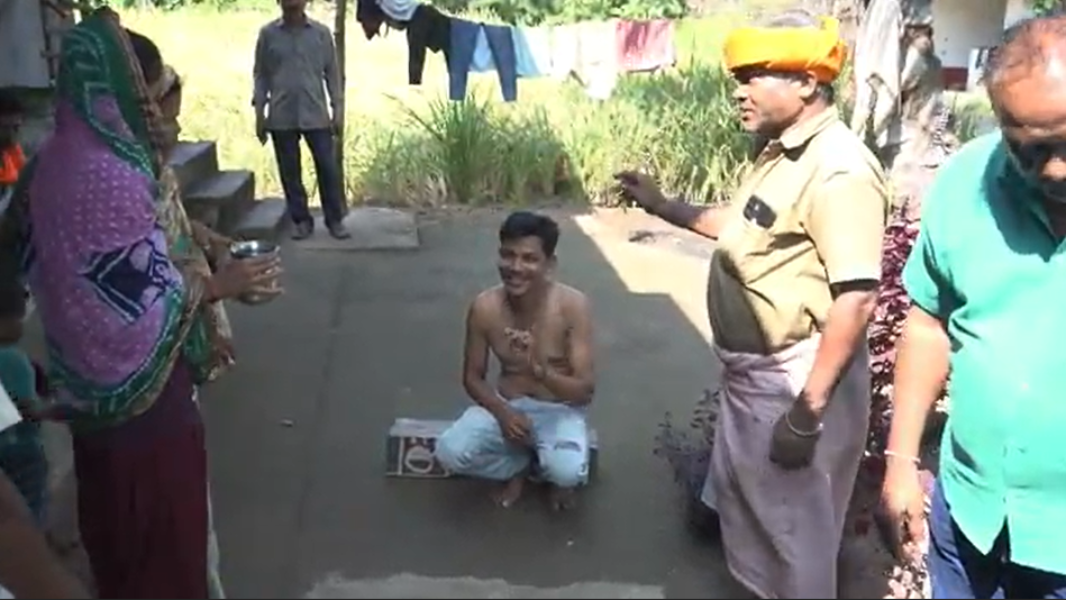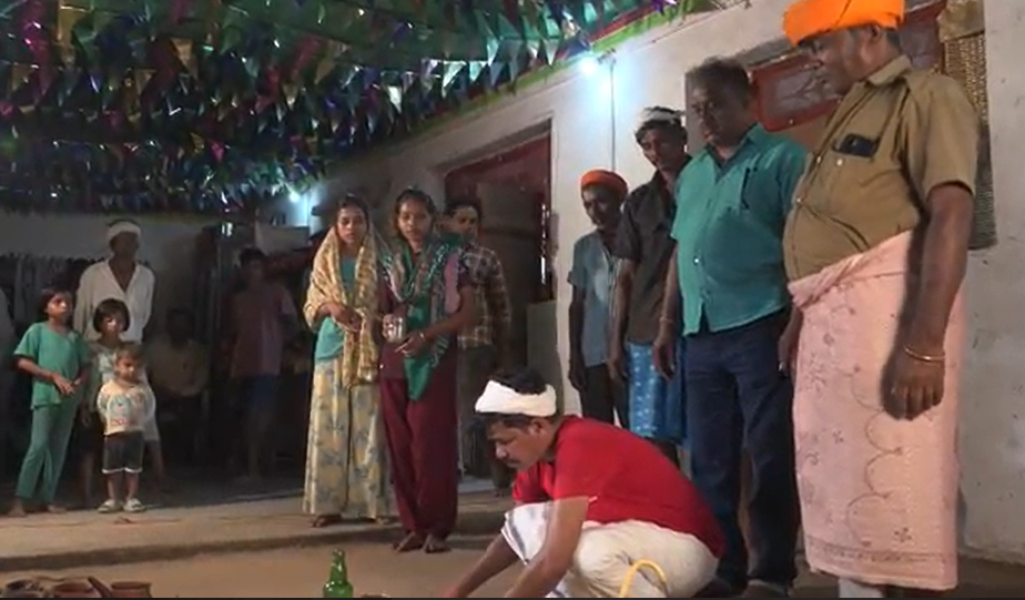practices showing communitarian life
Pithora Baba, gujarat

Rathwa Tribe originated in the Chhota Udaipur region of Gujarat where agriculture, the undying cultural heritage, binds their identity higher into the community existence of modern India. The Rathwas spoke Rathvi, a language linked with Gujarati, where their culture has agrarian and pastoral activities at its core. Their entire life is profoundly associated with Pithora painting, which is both sacred and made to illustrate their religious beliefs and social life. Their communitarian life, with its dances, songs, and rituals, is a testament to the bloody history and intimate relationship with nature.
The tribe encapsulates itself into an almost communal life of sorts that revolves around religious rituals, culture, and a collective view of their respective self that is basically communal. Pithora paintings end up as that great communal ritual of painting human figures with sacred colors on single walls in an attempt to symbolize cohesion. Every festival, wedding, and harvest there sees people coming together with promising and meaningful contributions right from the members of various families-thus, even a shared vocation now unites them in communal teamwork-reinforcing bonds via dancing, singing and storytelling. The practice builds on their heritage while lending itself to so much socializing.

The community and family form the core feeling of the social structure of relative interaction. The common bond is part of the consensual judgement of each constituent. The need to respect elders is exceeded as an implicit exercise in the observance of nonviolence among the women. These aspects have been consumed in creating a meaningful life for society. This phase is embraced by the cooperative values that denizens from mankind into a relationship sainted by them, guiding the social relationship they hold dear. Children of Rathwa society, community-being—sharing—from labor of the hand, mind, and soul; the whole village participates in an incredibly necessity called a wedding. This form of cooperation—collectively working, to their own healthy satisfaction, with the ingredients of cooking, decorating, etc. This kind of conduct in Rathwa public life has brought about a democratic ethos, leading them to stand immaculate in peace, intimately knit together in this orderly and pious culture.

Community cooperation is central to the religion of the Rathwas and from which they share ever-sacred communal rites. Pithora Baba was their god who represented the underlying principle of prosperity and harvest to the Rathwas. The tribe has an environmental ethos that is reflected in its beliefs. They feel that everything on earth is equal and that God is in all forms. In the main, these are promoted and preserved through songs, dances, and paintings, through which they have embraced the distinctiveness of their life.

Their lifestyle certainly fosters immense cultural continuity, besides embodying strong respect for community living. Acts of communal candor like the Pithora witness the Rathwas claiming more reason and essence in religious acts than merely religious duties; they sometimes become connected with љthe culture as well as the production of money,ќ as they gain increasing recognition in this field of art. On the other hand, going ahead with building their strength, the Rathwas rely on this cultural strength as the setting for prejudice against just how and from where the carryover tradition had been ploughed into date.



